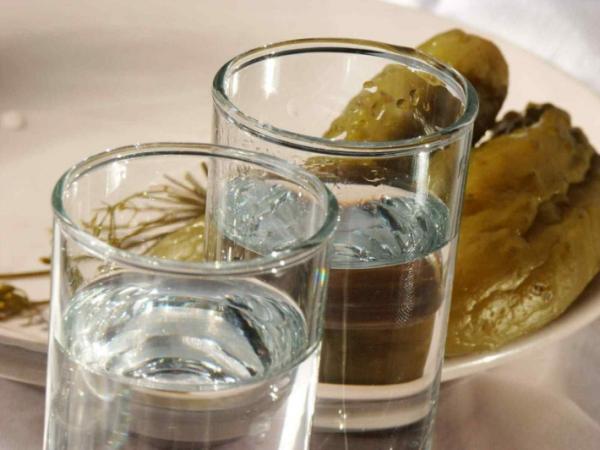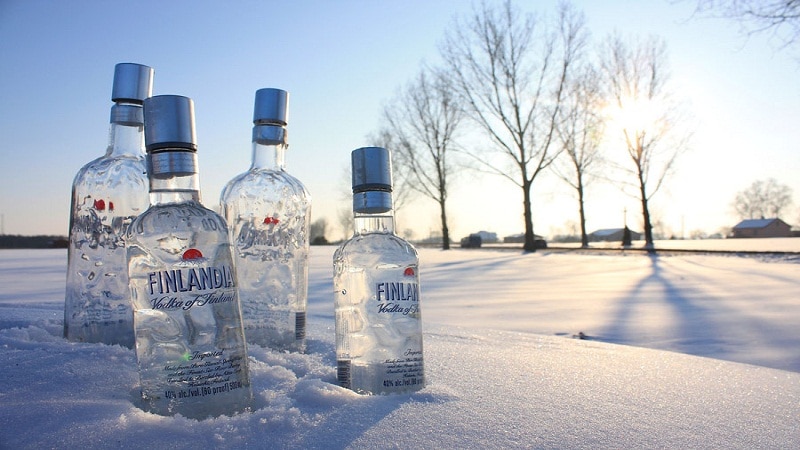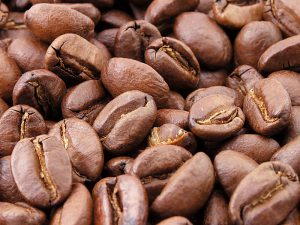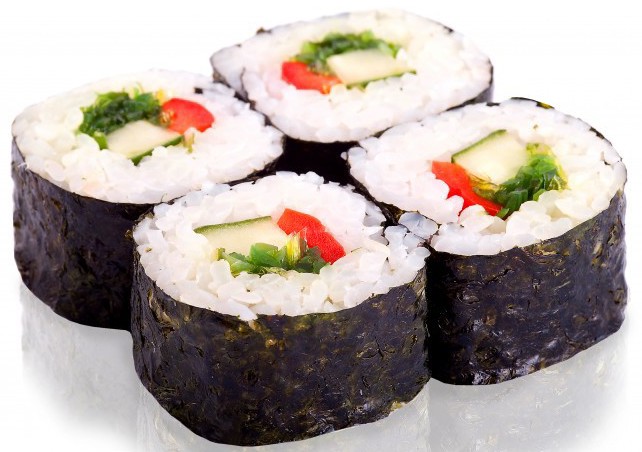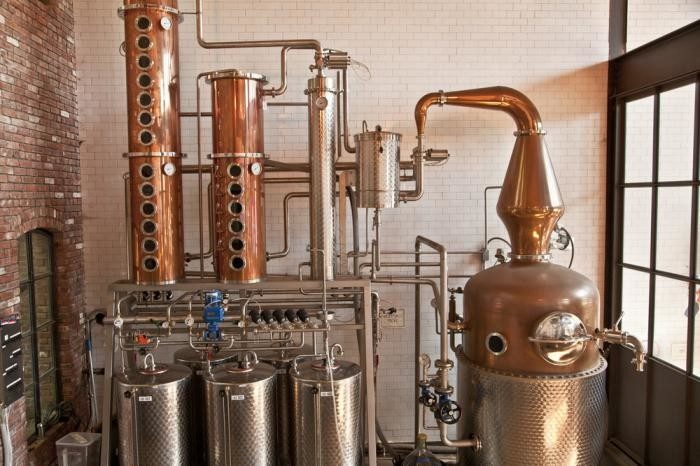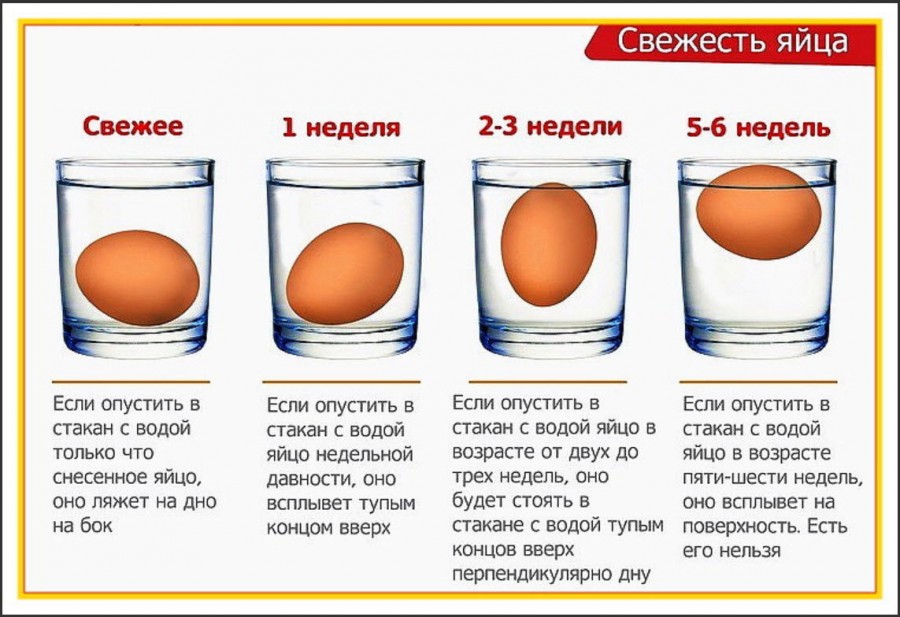The potato does not blacken. Potatoes turn black after cooking
Potato is one of the main food products that is present on our table almost every day. It is used both as an independent dish, and as a side dish to fish or meat, and as an ingredient in many dishes.
In order to cook potatoes, it must first be peeled from the peel covering the tuber. And here it is already impossible for the mistress to yawn, since without the skin the surface of the tuber darkens quickly enough and acquires a slightly appetizing bluish or dark gray shade. Why does peeled potato darken, and how can this be avoided?
Process biochemistry
In potato tubers, as in many other foods of plant origin, the enzyme tyrosinase and the amino acid tyrosine, which are among the essential amino acids, are present. Tyrosinase is required to capture oxygen from the atmosphere and catalyze the oxidation process.
Assisting in the oxidation process is an important function of the tyrosinase enzyme. Plant cells also contain other enzymes that help decompose complex organic substances into simple, easily digestible compounds.
Tyrosinase captures oxygen molecules from the air and participates in the tyrosine oxidation reaction. Tyrosine itself is a colorless substance, but after oxidation the reaction product acquires a bluish-brown color. If tyrosinase is removed from the potato, the cut tubers will not darken, no matter how much they lie in the air.
The more nitrogen compounds received during growth, the more tyrosinase is contained in tubers. Therefore, potato “overfed” with nitrogen darkens in just a few minutes. If you want to know without laboratory analysis whether the potatoes offered for sale contain too much nitrate, just cut a piece of the tuber and hold it in the air.
"Nitrate" tubers will become dark on the cut in ten minutes, and those grown on organic fertilizers lie for half an hour without changing their color.
How to keep peeled potatoes white?
It is not difficult to destroy tyrosinase. So, it is removed from the upper cell layer of the purified tuber with plain water. Therefore, when peeling potatoes, peeled tubers are dipped in water so that they do not darken. 
But you can’t keep them in the water for a long time, since it washes starch and inorganic substances from the potato, after which the potato becomes much less tasty and healthy. If you need to peel a lot of potatoes in advance, it is better to use other methods of preserving the color of tubers.
1. You can put peeled and washed tubers in a plastic bag, tie it tightly and place in the refrigerator. Low temperature will slow down the oxidation reaction, and polyethylene will block the flow of new portions of air to the tubers. Therefore, potatoes can easily lie in the refrigerator for even a day and not get dark. But you need to store it with whole tubers, as sliced \u200b\u200bslices are much harder to keep fresh.
2. Tubers that are peeled but unused right away can be blanched in water - dipped in boiling water for 3-4 minutes. Under the influence of high temperature, tyrosinase in the outer layer of potato tubers is destroyed, so it will remain light for a long time. So that the surface of the tubers does not dry out, it is advisable to fold them in a plastic bag or wrap with cling film. In the refrigerator, they can lie for up to two days, but then, unfortunately, they will begin to deteriorate under the influence of microbes.
3.
Freezing is the best way to keep potato slices fresh and ready to cook. It is necessary to cut the potatoes into cubes, preparing them for boiling or frying, put them on a tray and send them to the freezer. When the slices freeze, you can sprinkle them in a bag. It is necessary to lay out on a flat tray so that they do not freeze in one lump, otherwise it will be difficult to cook them later. Frozen tubers can be stored for one to two weeks without compromising their taste and nutritional qualities. 
There are other ways to preserve peeled potatoes - for example, evacuating or filling the potato pot with inert gas. But they are too complicated and expensive for home use.
Recently, for the first time in her life, she encountered a phenomenon such as turning blue potatoes after cooking. Our family does not grow this vegetable on the plot, since it takes up a lot of space and is inexpensive in season. Until now, they bought potatoes from familiar farmers, but then decided to buy a kilogram - another in the local market. And here it is, such an unpleasant surprise ...
It turns out that the potato flesh during the cooking process can not only turn blue, but also become black, gray or bluish. Such tubers contain an increased concentration of chlorogenic acid, which during heating interacts with ions of the glands and forms stable compounds of a dark color. It goes without saying that such a potato is not so tasty, and it looks very unappetizing.
The accumulation of chlorogenic acid in tubers is facilitated by several factors. Most often this happens due to potassium starvation. Its signs are observed on plants in the summer: first, the color of the leaves darkens, a bronze hue appears on them, then they begin to turn yellow and turn brown in an advanced stage. The fact that your potato lacks potassium is also evidenced by short internodes, more compactly arranged leaf segments and their deformation due to uneven development. As a rule, the lower leaves are affected first, and then the symptoms spread to the entire bush.
How to quickly and effectively help plants? In order to correct such a sad situation, it is enough to apply at least 30 grams (by active substance) of chlorine-free potash fertilizers per square meter of its area to a potato bed.
The reason for the blueing of potatoes after cooking can be the article and the incorrect ratio of the main nutrients in the dressings. Depending on the soil and climatic zone, the NPK proportion should be 1: 1.5-2: 1.5-2.2, then potassium should prevail over phosphorus. And only on peaty soils, the rate of nitrogen application is recommended to be slightly increased.
Fertilizers containing chlorine or sodium should also not be added to potatoes. But the use of chlorine-free fertilizers, on the contrary, stimulates the accumulation of citric acid in tubers, which, when reacted with iron, forms a colorless substance.
Try not to damage the tubers during digging, sorting, packing and transporting, as this also worsens their quality and can cause the pulp of boiled tubers to stain in unusual colors.
In addition, the taste of potatoes sharply decreases if, during the formation of tubers, plants experienced a lack of oxygen in the soil (for example, due to prolonged rains), as well as due to violation of the rules for their storage after harvest (temperature in the cellar is above +7 degrees, excessive humidity and a lot of carbon dioxide).
The variety of potatoes is also of great importance: Vyatka tubers, Sineglazki always darken during cooking, especially if they were kept in a warm place for a long time.
Fortunately, if you, like me, are not lucky to buy low-quality potatoes, it is not necessary to throw them away. To protect it from darkening during heat treatment, it is enough to throw a couple of leaves of lavrushka into the water. And although the potato from this method does not become tastier, it will at least have a more or less familiar look.
The pulp of potato tubers during cooking can be painted in gray, black or bluish, as in your case, the color.
Why is this happening and how to avoid it?In such tubers, chlorogenic acid accumulates, which during cooking forms a strong complex with iron ions. As a result, the taste and culinary qualities of tubers are reduced and they change color.
There are several reasons for the darkening of potato tubers.
1. First of all - insufficient potassium intake. Potassium starvation can be determined during the vegetation of plants. The leaves turn dark green with a bronze tint. Then they turn yellow and brown, the tissue at the edges of the leaves dies. The internodes are shortened, leaf wedges are more closely located, due to uneven growth, wrinkling of the leaves increases. First, these signs appear on the lower leaves of the bush, and then throughout the bush. To prevent this, it is necessary to introduce 1 sq. m not less than 30 g of potash fertilizers (according to the active substance).
2. The tubers turn blue and with the wrong ratio of batteries. Potatoes are known to consume more potassium, slightly less nitrogen, and even less phosphorus. Depending on the soil and climatic zone, the ratio of nitrogen, phosphorus, and potassium when applying mineral fertilizers should be 1: 1.5–2: 1.5–2.2. Only on peat bogs the dose of nitrogen is increased. It is not recommended to use potash fertilizers with impurities of sodium and chlorine.
The introduction of chlorine-free potash fertilizers under the potato promotes the accumulation of more citric acid in the tubers, which forms a colorless compound with iron.
3. The causes of darkening of potatoes may be injury to tubers during harvesting, loading and transportation, bulkheads.With tissue damage, oxidative processes intensify, in particular, irreversible oxidative transformations of phenolic compounds occur.
4. Lack of oxygen to the soilduring the growing season, and especially during the formation of tubers, can also lead to their darkening. Violation of the temperature and humidity during storage of tubers, lack of oxygen and excess carbon dioxide also affect the quality of the products.
Great importance is given to varieties. In some early ripening varieties, tubers begin to darken during cooking already in April, especially at elevated storage temperatures.
So, to prevent the tubers from darkening when cooking potatoes, it is necessary to provide plants with potassium, provide for good aeration of the soil, and avoid injury to tubers during harvesting and transportation of the crop. It is also necessary to observe the optimal storage regime for potatoes (temperature not more than 7–7.5 ° C). Reduces the darkening of tubers during cooking by adding 1-2 leaves of bay leaves to the water, while the taste of the potato does not deteriorate.
Potato is the most popular crop in Russia. It grows in every garden, and with the advent of autumn, it is cleaned in the cellar for long-term storage. But, unfortunately, it happens that the potato tubers begin to blacken. The most common reason for this process is improper storage. Let's see why this happens and what to do if the seedlings have time to freeze.
Even healthy-looking vegetables can have black spots. Why this happens is often a secret. If this problem has spread to most of the crop, urgent action is needed.
What varieties can be stored in winter
There are about 380 varieties of potatoes. All differ in the color of the peel, pulp, taste, size of the root crop, ripening time. When choosing potatoes for long-term storage, you need to be guided by another indicator - its keeping quality.
Potato storage is directly affected by the selected variety based on the ripening time. The most inappropriate variety is early ripe, such a vegetable is intended for consumption in the summer and at the beginning of autumn maximum. Varieties with medium and late ripening are suitable for long-term storage.
When choosing a term, you need to look so that the technical maturity of the root crop reaches 100-130 days. Such potato forms a thick peel, copes well with diseases, contains a large amount of tannins.
It is better to purchase several varieties of potatoes if there is no experience in planting and storing a certain type of root crops.
Late varieties for long storage most suitable. They contain a large number of microelements and will last until the spring without any problems. Popular late varieties: “Picasso”, “”, “Lorch”, “Atlant”, “Vesnyanka”.
The desired temperature and humidity for potatoes
Keep the vegetable at a temperature +2 +6 degrees, and the humidity should be at 80-90% . The most suitable storage room is a cellar or basement.

Preferred ventilation. At a temperature of 0-1 degrees, the potato does not rot, but becomes sweetish, and the flesh darkens. At a temperature of 7-12 degrees, the tubers begin to germinate, become soft, and spots appear on the pulp.
Why potatoes turn black inside when stored
Darkening can occur due to illness - gray spotting.
The main causes of darkening:
- the culture doesn't like fresh organics, since an excess of nitrogen is released, which contributes to the reproduction of fungi. This contributes to the darkening of potatoes;
- when the root crop is born, there is a shortage or excess of moisture;
- the harvest is harvested ahead of time, in the unripe potatoes the flesh darkens. Overripe potatoes, during the heat season, can deteriorate when stored in an overheated room;
- if harvesting is done late in the period of frost, the tubers may overheat, the flesh may darken. At a soil temperature of -2 degrees and frost, the tubers begin to rot;
- poor-quality transportation: shock, pressure;
- improper storage conditions over a long period. Temperature above or below 2-6 degrees;
- tubers contain a high percentage of starch;
- disease defeat - blackleg. It is transmitted through planting material, the defeat of the disease and blackness during storage continues.
Why blackens in spring
It happens that the vegetable survived the winter well, and with the advent of spring it begins to blacken. The reason may be in poor ventilation.
The potato begins to sprout with the advent of warming and in the spring period sprouts, the flesh darkens, it becomes lethargic and soft. A sharp temperature difference occurs in the storage. Moisture is released and this again contributes to the debate.
What can and should be done so that the vegetable does not darken
So that the potatoes do not darken, it is necessary to observe the temperature regime and store it in wooden boxes with ventilation holes.
Set up pallets and push them away from walls 20 cm. Thanks to this, you can avoid: get wet and freeze.
After harvesting you need within 20 days leave the potatoes to air in the fresh air. It is forbidden to store root vegetables with vegetables other than beets.

In the period of frost
Sometimes it happens that a vegetable gets frozen. This is not entirely dangerous if the potatoes have not sprouted. But if sprouts appeared, then the arrival of frosts can have an impact on the quality of the future crop and beat it.
Are the cold weather terrible for culture
Spring frost scary for the crop potatoes. This is especially true for areas of Siberia. Young potato sprouts are afraid of frost and are especially sensitive to spring frosts and any temperature from 0 and below can kill the crop.
Will the potato itself go away after freezing
Some gardeners plant potatoes at the beginning of March, and there are risks of the crop getting frozen.
If the young sprouts are frozen, this may affect the future harvest, although the potatoes will continue to grow with warming. Older plants are not affected much by cold.

How to save after frost
If they promise frost, you need to urgently spud sprouts culture, and after frost free bushes then ridges.
To avoid freezing and give the potato a chance to survive if it had time to freeze it, you can warm the vegetable, covering the plantings with grass. Some gardeners make bonfires of straw, shavings on the edges of the arable land and thereby warm the soil. To increase the smoke mass, it is recommended to drip mineral oils or coal tar into the fire. You can also cover the beds with foil.
If the frost has passed, and the vegetable has already managed to freeze, you need to give the bushes the opportunity to restore themselves. Damaged bushes are able to recover, albeit with great effort. To help the crop, you need to feed it with nitrogen fertilizers.
The reasons that the potatoes in the garden froze
If the air temperature drops below zero degrees, or night frosts begin in the spring, the potatoes begin to freeze and may freeze. It affects the sprouts, they blacken and fade. In the future, even if the plants continue to grow and “move away”, the pulp of the fruit may begin to blacken.
What to do if seedlings and tops freeze
If the frost started unexpectedly and the seedlings froze, then you need before dawn they darken using: newspapers, dark film, rags.
The main thing is to thaw gradually, then the tops will not fade and frostbite will be negligible.

What to feed
Affected crop needs treatment nitrogen, and also it is necessary to make top dressing: nitrofosk 5 gr. on 1 sq. m.
Urea top dressing of 20 g per 10 l of water is also useful. To make the frosted tops come to life, you need to spray it " Epin Extra».
If the frost began when the crop has bloomed, but it has not yet been harvested, then you can feed it with ash or potash preparations. After cold weather, it is forbidden to dig up potatoes, you need to wait for warming.
First steps if frost hit after landing
If, after planting, frost was seized and hit, the vegetable managed to freeze, then in order to save it, it is urgently necessary to reanimate and process it with special means.
Ways to save the crop, if portend frosts:
- hilling. After the frost, the sprouts suffer, so you should spud the crop so that the tops are completely under the ridge;
- mulching. Warm the crop with a thick layer of straw, hay or sawdust;
- covering of a crop with a film. Only the film should not put pressure on young shoots. Along the perimeter, pegs should be installed and the film stretched;
- sprinkling. Harvest should be abundantly watered with water when t is 0. Water will begin to evaporate and protect the plant;
- smoke warming. Above mentioned about this method of protection against frost. It is necessary to light a fire on both sides of the crop, so that smoke spills over the entire site. To create a smoke screen, you need to light a fire so that the fire burns 50-70 cm in height. To do this, you can burn straw, firewood, manure. The fire should burn for 3-4 hours in the morning. The method is effective only in windy weather;
- strengthening cultural immunity. Before planting the crop, it is necessary to strengthen the planting material with the help of preparations of growth regulators. They help young shoots to withstand any weather conditions. The most popular: Silk, Biostim, Epin Extra.
To provide yourself and your family with potatoes for the whole winter, you need to choose the most “tenacious” potato variety, as well as observe the rules for storing root crops. Have a rich harvest!
The pulp of potato tubers during cooking can be painted in gray, black or bluish. Why is this happening and how to avoid it?
In such tubers, chlorogenic acid accumulates, which during cooking forms a strong complex with iron ions. As a result, the taste and culinary qualities of tubers are reduced and they change color.
There are several reasons for the darkening of potato tubers.
1. First of all - insufficient potassium intake. Potassium starvation can be determined during the vegetation of plants. The leaves turn dark green with a bronze tint. Then they turn yellow and brown, the tissue at the edges of the leaves dies. The internodes are shortened, leaf wedges are more closely located, due to uneven growth, wrinkling of the leaves increases. First, these signs appear on the lower leaves of the bush, and then throughout the bush. To prevent this, it is necessary to introduce 1 sq. m not less than 30 g of potash fertilizers (according to the active substance).
2. The tubers turn blue and with the wrong ratio of batteries. Potatoes are known to consume more potassium, slightly less nitrogen, and even less phosphorus. Depending on the soil and climatic zone, the ratio of nitrogen, phosphorus, potassium when applying mineral fertilizers should be 1: 1,5-2: 1,5-2,2. Only on peat bogs the dose of nitrogen is increased. It is not recommended to use potash fertilizers with impurities of sodium and chlorine.
The introduction of chlorine-free potash fertilizers under the potato promotes the accumulation of more citric acid in the tubers, which forms a colorless compound with iron.
3. The causes of darkening of potatoes may be injury to tubers during harvesting, loading and transportation, bulkheads.With tissue damage, oxidative processes intensify, in particular, irreversible oxidative transformations of phenolic compounds occur.
4. Lack of oxygen to the soilduring the growing season, and especially during the formation of tubers, can also lead to their darkening. Violation of the temperature and humidity during storage of tubers, lack of oxygen and excess carbon dioxide also affect the quality of the products.
Great importance is given to varieties. In some early ripening varieties, tubers begin to darken during cooking already in April, especially at elevated storage temperatures.
So, to prevent the tubers from darkening when cooking potatoes, it is necessary to provide plants with potassium, provide for good aeration of the soil, and avoid injury to tubers during harvesting and transportation of the crop. It is also necessary to observe the optimal storage regime for potatoes (temperature not more than 7-7.5 ° C). Reduces the darkening of tubers during cooking by adding 1-2 leaves of bay leaf to the water, while the taste of the potato does not deteriorate.
